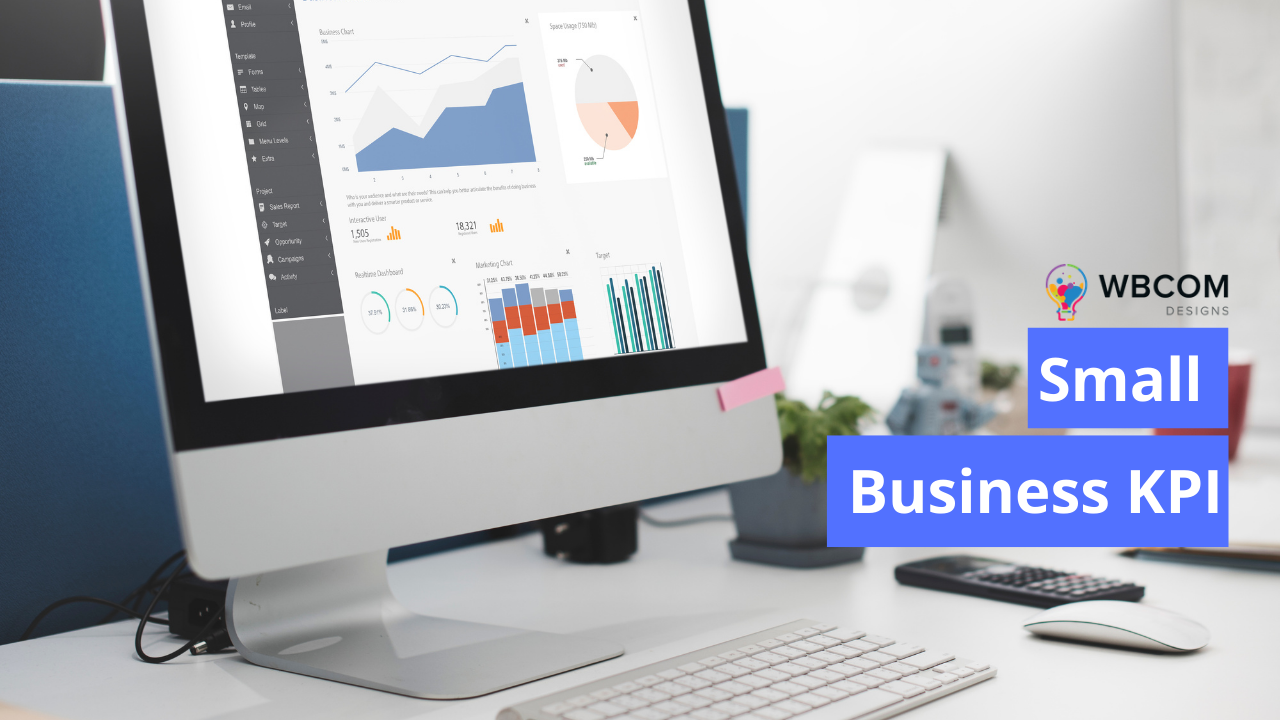Establishing an online presence for your company is no longer a differentiating factor in today’s market. It’s essential for today’s market if you want your company to stand out from the crowd and earn clients’ trust. If you want to succeed in business, it’s not enough to have a website that looks and feels professional; your website must also contribute to those aims.
Here are some essential Small Business KPIs to monitor to get a feel for how visitors to your website are interacting with it. Learning about these aspects will help you determine whether or not it is producing the results your company requires.
Table of Contents
ToggleWhat Are KPIs Or Key Performance Indicators?
For small and medium-sized enterprises (SMEs), key performance indicators (KPIs) are the engine that drives growth over the long haul. Key performance indicators (KPIs) are a group of numbers used to analyze and compare an organization’s performance in relation to its operational and strategic goals. Key performance indicators offer an effective method of management.
The studies agree that small businesses are doomed to fail without KPIs. Only 20% of new firms make it through the first year, and only 30% make it to their 10th anniversary. Most failures may be traced back to a lack of direction from upper management, often the result of chaotic goals that key performance indicators could have helped clarify. In other words, KPIs serve as an inbuilt management safety net, preventing the confusion and strife that can undermine morale and leadership ability and lead to a loss of focus and direction for the entire organization.
Top Key Performance Indicators (KPIs)

Conversion Rate
How well you persuade people to take a specific action on your website is measured by the conversion rate. In an online store, clicking the “purchase now” button is the most common requested action. Two examples of frequent conversion behaviors are signing up for a newsletter or downloading a free e-book.
To get a high conversion rate, all aspects of your website must work together to achieve your goals. This includes everything from the user interface design to the text shown on the pages of your website. On the other hand, if your website’s conversion rate is low, you may need to examine its design and content to identify the causes.
Keep in mind that unless you are a professional web designer, you may not be able to spot the one thing that is driving people away from your site. If your conversion rate has dropped, it may be time to consult a web design provider to find out why.
Bounce Rate
Bounce rate refers to “the proportion of visitors to your site who go to just one page during their session” and “the number of times those visitors make just one request to your Analytics server,” as defined by Google. A “bounce” occurs when a visitor opens a page on your website but leaves without exploring any further.
Even if your site has a high bounce rate, that doesn’t mean it’s terrible. This is especially true in the case of blogs, where the most important material is typically presented on a single page. Because there are so few things to do on lead generation and landing pages, they also tend to have high bounce rates. However, if the landing page is generating a strong return on investment, a high bounce rate is not something to worry about.
Having a low “bounce rate” is desirable in many contexts. If your site’s bounce rate is significantly lower than 40%, however, there may be an issue with how your Google Analytics code was implemented.
Number Of Qualified Leads
Increases in your website’s monthly visitor count indicate that your content is interesting to a growing audience. Don’t rest on your laurels just yet if you want to make money through sales. You can increase your chances of making a sale by attracting more qualified leads from your website’s traffic by screening out unqualified leads first.
Individuals that provide contact information and match the demographics of your ideal customers are considered qualified leads. Collecting contact information from potential customers using a lead generation form may narrow down your list of qualified leads.
These details and Google Analytics’ trove of demographic data are sent to any CRM software you’ve chosen. With this information, you may rate and categorize your leads to determine which ones warrant your immediate attention.
Also Read: Custom Email Options Plugin for WordPress Websites
Customer Satisfaction
Satisfaction among customers is difficult to quantify because of its subjective nature. As an example, Google Analytics does not provide a dedicated section for tracking consumer happiness. The good news is that a few methods are available for monitoring this qualitative indicator.
Installing a Net Promoter Score application programming interface (API) on your site is a simple yet effective method. On a scale from 1 to 10, this enables site visitors to rate how satisfied they were with their experience on your website.
And if you want to really drill down into your clients’ experiences, you may create survey forms to do just that! Your full-service web agency should have access to the administrative panel where these settings are configured.
Quick Ratios
The quick ratio is a key performance indicator (KPI) for small businesses (firms) because it plays a vital role in keeping tabs on cash flow. This key performance indicator reveals whether or not your current assets are sufficient to cover your existing debts. You may have trouble making ends meet if your quick ratio is less than one.
Customer Acquisition Cost
The cost to acquire a new client is another (small business KPI) key performance indicator (KPI) that can help business leaders (CAC). CAC is determined by dividing total customer acquisition costs by the number of new customers. This KPI will reveal whether or not your efforts to bring in new customers are costing you too much money.
Margin Of Profit
The profit margin is an integral part of any company’s day-to-day activities. Key performance indicators (KPIs) can be based on various metrics, including gross and net profit margins. A company’s gross profit margin is the amount left over after all costs have been deducted. Assuming all goes well, the percentage should rise. A slimmer margin is achieved by deducting not just direct but also indirect expenses. Changing prices or reducing costs may be necessary if either profit margin falls.
Also Read: UI Design Guidelines That Every Professional Ought To Bear In Mind
Website KPIs And Setting Goals
Use the SMART goals framework as a starting point for effective website goal-setting.
Specific
Have a well-defined and focused objective. Overly broad targets don’t provide enough guidance.
Measurable
Your goals must be quantifiable to determine whether or not your efforts were successful or whether or not you need to make any changes.
Attainable
Your target should be realistic. When you aim for something doomed to fail, that is precisely what you will get.
Relevant
Your objective must be directly related to your current work.
Time-bound
A time limit should be set for your goal to be more tangible.
Conclusion On Small Business KPI
Your website’s success may not be solely tied to how much money it makes for your business, depending on the nature of your operation. Many small companies indeed rely on their websites for revenue generation. Still, it’s also very typical for them to serve primarily as a lead generation, brand awareness tool, or even a customer care hub.
The metrics mentioned here should be sufficient for all such scenarios, but some may be more crucial to your enterprise than others. Reach out to a results-oriented digital agency that provides website metrics and analytics to get a clear picture of your site’s performance.
Interesting Reads:
How To Pick Online Marketplace To Sell Products?








